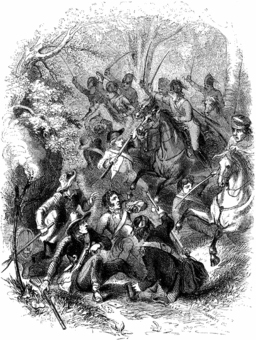While the Revolutionary War is often remembered for the bravery of men who fought on the frontlines, countless women and even children played critical roles in supporting the war effort. Their contributions, though often overlooked or lost to history, were vital to the fight against British rule. These unsung heroes cared for soldiers, volunteered their time, and risked their lives, leaving an indelible mark on the nation’s history.
Sybil Ludington is one of the most celebrated women of the Revolutionary War, earning the nickname "The Female Paul Revere" At 16, Ludington undertook a daring night ride to alert militia forces about British troop movements. On a rainy night in 1777, she rode 40 miles through rural New York, stopping at multiple locations to rally troops. Her efforts enabled the militia to organize and repel British forces, forcing them to retreat to their ships near Long Island. Though her story is less widely known than Revere’s, her bravery and determination were crucial to the war effort.
Deborah Sampson: A Soldier in Disguise
Deborah Sampson Gannett’s story is one of remarkable courage and resilience. Born in Massachusetts, Sampson worked as a teacher in her late teens while witnessing British forces tighten their control over Boston. She saw homes seized by soldiers, freedoms restricted, and tensions rise among colonists. Inspired by the reading of the Declaration of Independence in 1776, Sampson decided to join the fight for liberty—a bold decision for a woman at the time.
In 1782, Deborah Sampson disguised herself as a man and enlisted in the Continental Army under the name Robert Shurtleff. Though initially nervous about reporting for duty, she persisted and joined Captain George Webb’s company in the 4th Massachusetts Regiment. Her disguise was convincing enough to pass muster and earn her a place among her fellow soldiers.
 |
| Engraving by George Graham. From a drawing by William Beastall, which was based on a painting by Joseph Stone. Used as the frontispiece of The Female Review: Life of Deborah Sampson, the Female Soldier in the War of Revolution, by Herman Mann (1771-1833). [Public domain], via Wikimedia Commons |
Service and Sacrifice
Sampson’s regiment was deployed to lower New York to combat guerrilla attacks. During a battle near Tarrytown, she sustained injuries to her head and thigh while retreating with her unit. Although her head wound was treated at a field hospital, she concealed her thigh injury from doctors out of fear that her true identity would be discovered. Attempting to treat herself, she left a musket ball lodged in her leg, which caused long-term complications.
Despite these hardships, Sampson returned to active duty after recovering from her injuries. However, she later fell ill and was sent to recuperate at a doctor’s home. During treatment, the doctor discovered her secret and informed military officials. On October 23, 1783, Sampson was honorably discharged from service. Her fellow soldiers respected "Robert Shurtleff" as a brave comrade but never knew she had been living as Deborah Sampson.
Life After the War
After leaving the army, Sampson married Benjamin Gannett and settled in Massachusetts. The couple faced financial difficulties throughout their marriage and often relied on borrowed money to make ends meet. Paul Revere , a friend of Sampson’s, advocated on her behalf and secured back pay from the Massachusetts government totaling 37 pounds—a modest sum that did little to alleviate their debts.
, a friend of Sampson’s, advocated on her behalf and secured back pay from the Massachusetts government totaling 37 pounds—a modest sum that did little to alleviate their debts.
To support her family further, Sampson became the first woman in America to deliver public lectures about her wartime experiences. Traveling from city to city, she shared her story of courage and sacrifice during the Revolutionary War. Though these lectures brought some income, they were not enough to resolve her financial struggles.
In the early 1800s, Sampson was awarded a veteran’s pension of $4 per month—a small but significant acknowledgment of her service. After her death on April 19, 1827, at age 67 in Sharon, Massachusetts, her pension was transferred to her husband until his passing.
Legacy
Both Sybil Ludington and Deborah Sampson exemplify the bravery and determination of women who contributed to America’s fight for independence. Their stories remind us that history is shaped not only by those who lead armies but also by those who defy expectations and rise to extraordinary challenges. While their names may not be as widely recognized as others from the Revolutionary War era, their contributions remain an essential part of our nation’s story—one that deserves continued acknowledgment and celebration.
Citations:





